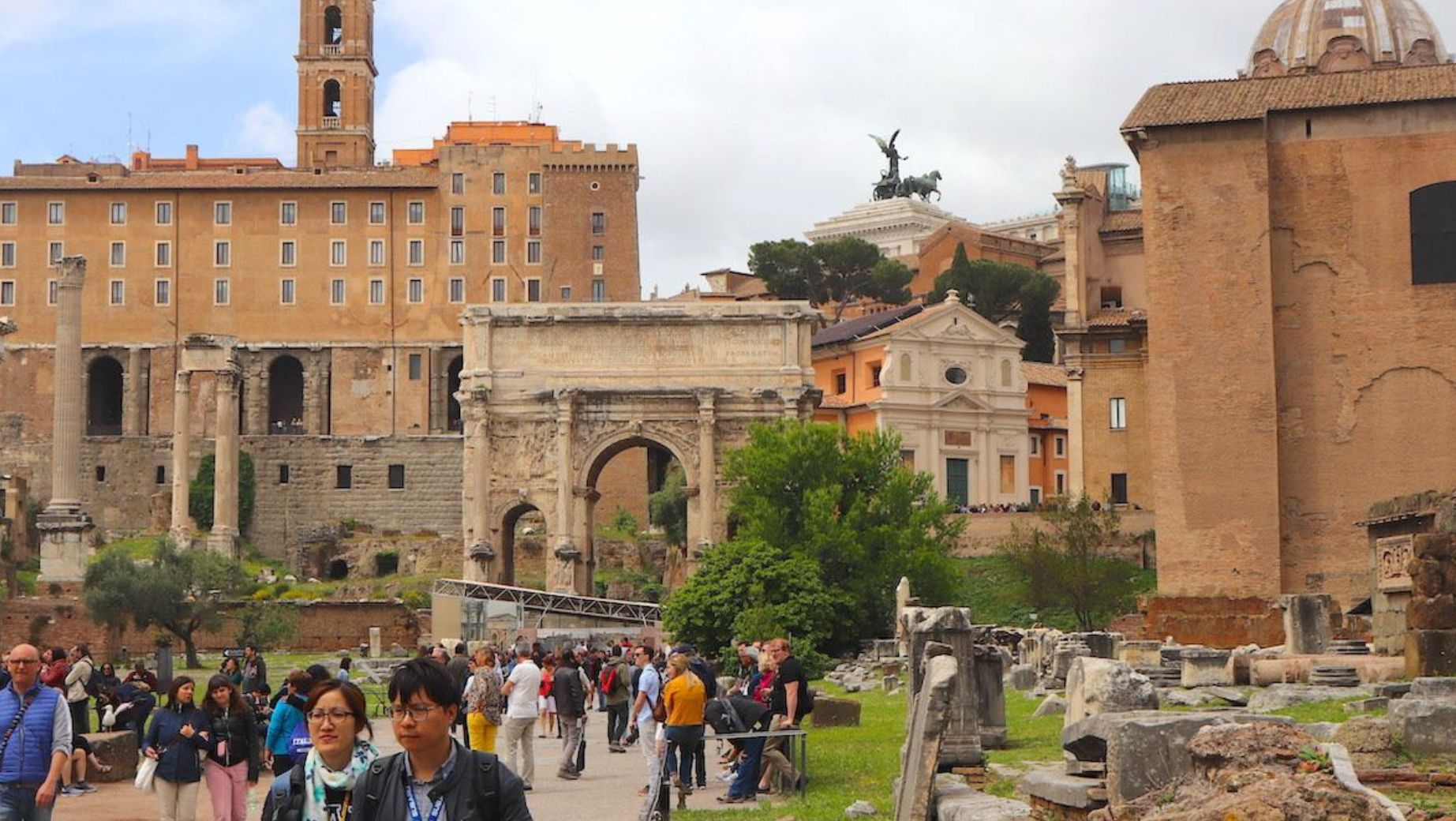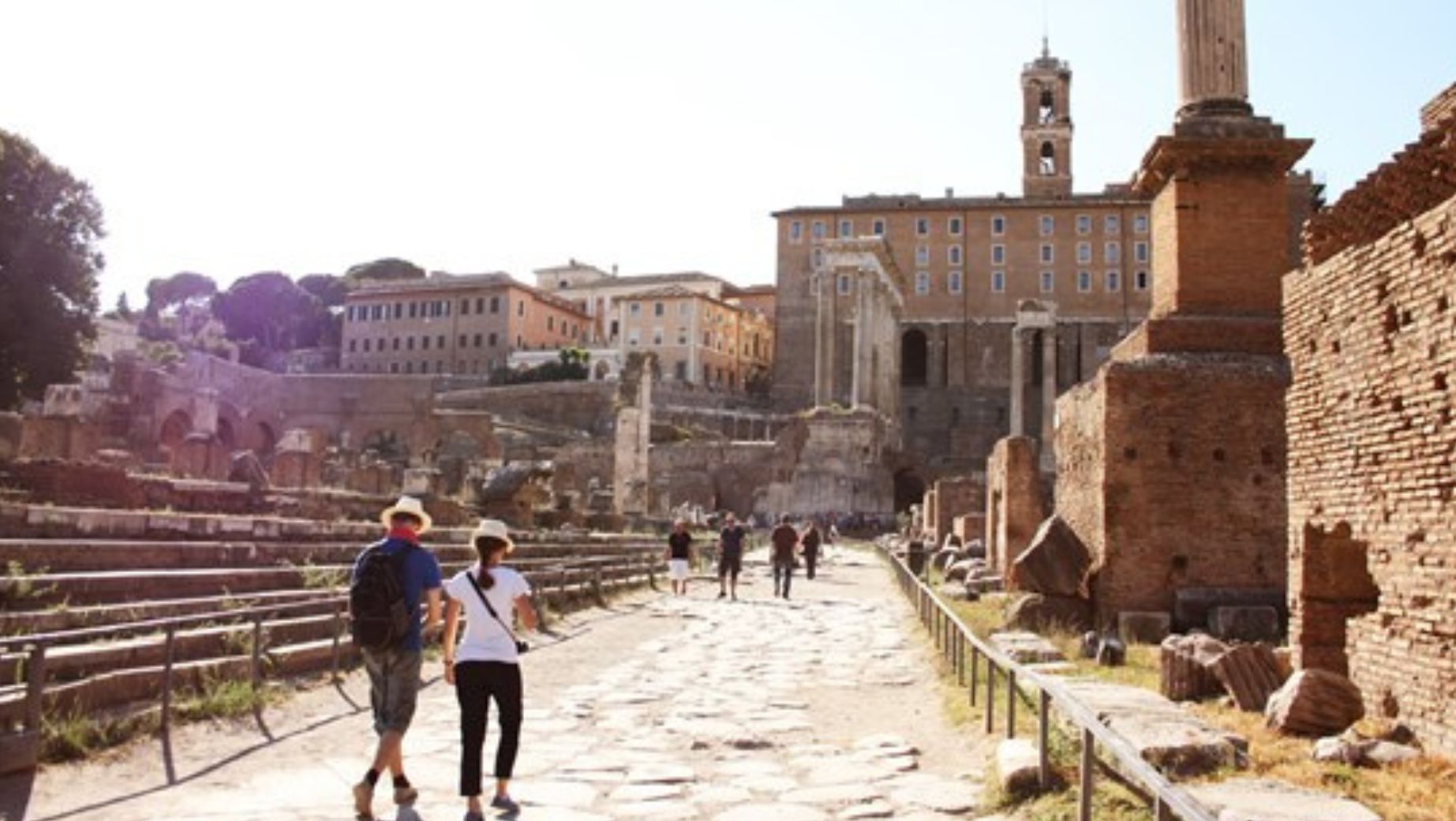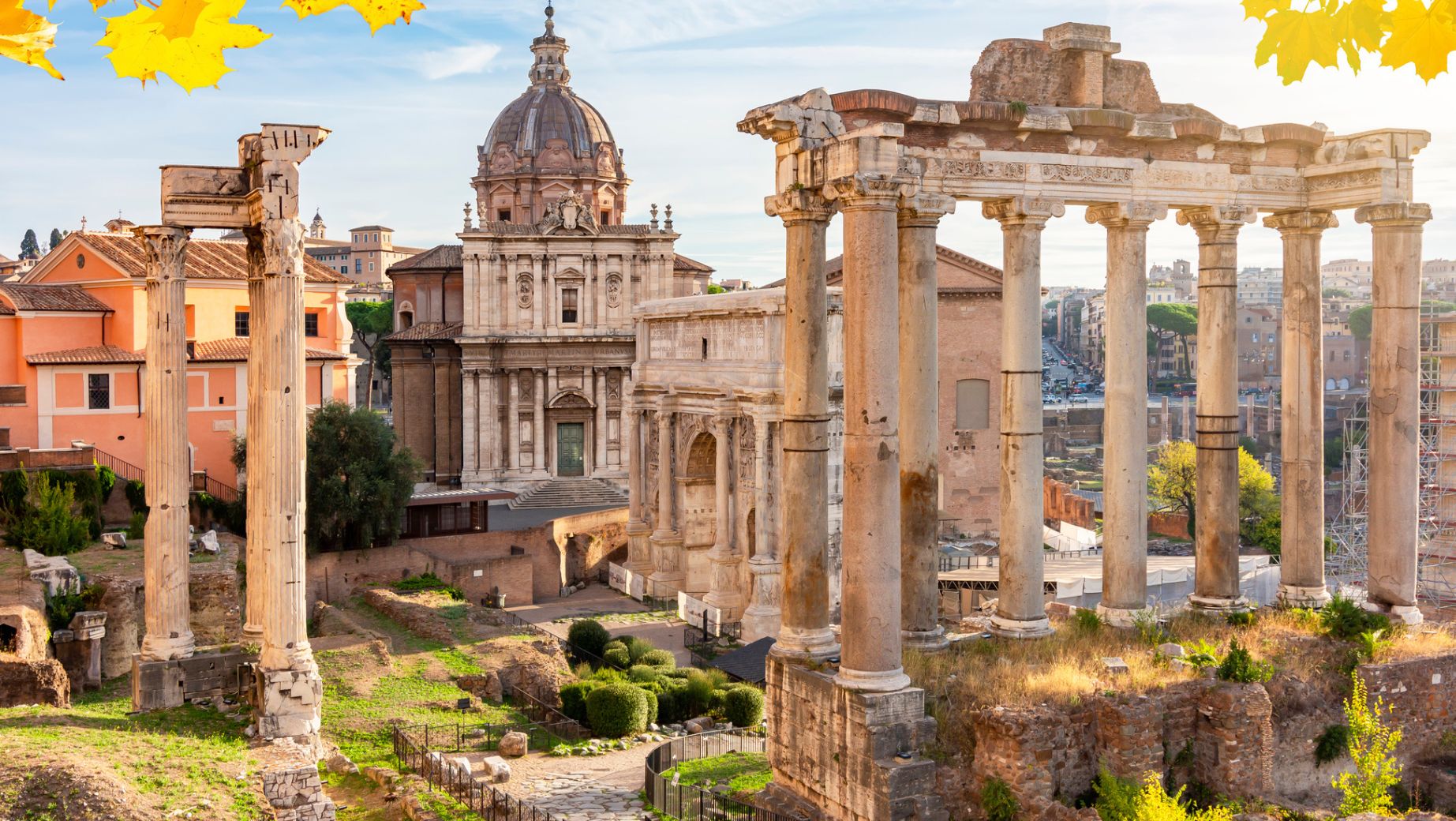Imagine a bustling center where politics, religion, and daily life all converge. That’s what the Roman Forum was—an epicenter of ancient Rome. It wasn’t just a place; it was the heartbeat of the city, where monumental events unfolded and the essence of Roman culture thrived. From grand speeches and legal proceedings to vibrant markets and religious ceremonies, the Forum was where Rome’s grand stories were written. Dive into the Roman Forum to uncover how this historic space shaped the ancient city and continues to capture our imagination today.
Historical Development of the Roman Forum

The Roman Forum’s origins trace back to the early days of Rome, around the 7th century BCE. Initially, it was a marshy area between the Palatine and Capitoline Hills, used for burial and religious rites. As Rome grew, the Forum was gradually transformed into a civic center through a series of drainage projects and construction efforts.
By the 6th century BCE, under the rule of the early kings, the Forum began to take shape as a political and economic hub. It became the heart of Roman public life, hosting key institutions like the Senate House and various temples. Over time, the Forum expanded to include triumphal arches, basilicas, and other monumental structures. This transformation continued through the Republic and Empire periods, reflecting Rome’s political, social, and economic evolution.
Architectural Layout and Key Structures: Roman Forum
The Roman Forum was meticulously designed, reflecting its importance as the center of public life. The Forum’s layout was an open plaza surrounded by significant buildings and monuments. The Senate House, or Curia, was a key structure where the Senate met to discuss and make decisions. It was a large, rectangular building with a simple, yet imposing design.
Another prominent building was the Temple of Saturn, located at the western end of the Forum. This ancient temple, dedicated to the god Saturn, housed the state’s treasury and was a symbol of Rome’s wealth and stability. The Forum also featured other important structures, such as the Basilica Julia and Basilica Aemilia, which served as centers for legal and commercial activities. These architectural elements combined to create a dynamic space where politics, religion, and daily life intersected.
Political Functions of the Roman Forum
The Roman Forum was the epicenter of political life in ancient Rome. It was the site where major public speeches and political debates took place, influencing the course of Roman governance. Politicians and leaders used the Forum to address the masses, campaign for elections, and discuss pressing issues.
Elections for various public offices were held in the Forum, where citizens gathered to vote and hear candidates. This space was crucial for the democratic aspects of the Roman Republic, allowing direct interaction between politicians and the electorate. Additionally, the Forum was where significant political decisions and legislative debates occurred, shaping Rome’s laws and policies. Its role in facilitating these political processes made it a vital component of Rome’s civic and political landscape.
Roman Forum: Religious Significance

The Roman Forum was deeply intertwined with Roman religious life. It hosted several important temples, each dedicated to various deities and playing a central role in state rituals. The Temple of Saturn, for instance, was not only a religious site but also housed the state treasury, linking spirituality with civic administration.
Major religious ceremonies and festivals were held in the Forum, including the Triumph, a grand parade celebrating military victories. The Forum was also the site of daily rituals performed by priests to honor the gods and secure their favor. These practices reinforced the connection between religion and politics, demonstrating how religious and civic life were interwoven in ancient Rome. The Forum’s religious significance highlighted its role as a center for both spiritual and public affairs.
Economic Activities of the Roman Forum
The Roman Forum was a bustling commercial hub in ancient Rome. It housed vibrant markets where traders sold goods ranging from food to textiles. The Forum’s central location made it an ideal spot for commerce, attracting merchants and buyers from across the city.
Trade was a significant activity in the Forum, with various stalls and shops lining its streets. The Forum also hosted large-scale public events, such as auctions and public sales, which were crucial for economic transactions. These activities not only facilitated the exchange of goods but also helped integrate Rome’s economy, making the Forum a key player in the city’s financial life. The Forum’s role in economic activities underscored its importance as more than just a political and religious center; it was a vibrant marketplace that supported Rome’s economic growth.
Roman Forums: Social and Cultural Hub
The Roman Forum was a lively center for social and cultural activities in ancient Rome. It was the go-to place for public meetings, where citizens gathered to discuss political matters, hear speeches, and participate in civic life. Festivals and celebrations also took place here, reflecting Rome’s rich cultural traditions.
The Forum hosted a variety of events, including religious festivals like the Saturnalia and the Lupercalia, which featured processions, games, and feasting. Public performances, such as theatrical plays and recitals, added to the Forum’s vibrant atmosphere. This space was not just for formal activities; it was a social hub where Romans interacted, celebrated, and engaged in cultural practices. The Forum’s role as a cultural and social gathering spot highlighted its importance in fostering community life and civic pride in ancient Rome.
Roman Forums: Legal and Administrative Functions

The Roman Forum was essential for legal and administrative functions in ancient Rome. It served as the location for legal proceedings, where public trials and judicial hearings took place. Important legal documents and decrees were often announced here, ensuring that the citizens were informed about new laws and decisions.
The Forum also housed various administrative offices and officials who managed the city’s affairs. Buildings like the Basilica Julia functioned as courtrooms and offices where magistrates conducted business and resolved disputes. The space allowed for the efficient administration of justice and governance, making it a central venue for both legal processes and daily administrative tasks. The Forum’s role in these functions underscored its importance as the administrative heart of Rome, where legal and civic matters were addressed and managed.
Roman Forums: Public Monuments and Commemorations
The Roman Forum was adorned with numerous public monuments that celebrated Rome’s achievements and honored its leaders. Triumphal arches, like the Arch of Titus, were erected to commemorate military victories and serve as grand entrances to the Forum. These arches were richly decorated with reliefs depicting scenes of triumph and conquest.
Statues and monuments of emperors and other prominent figures also filled the Forum. They were not only artistic expressions but also served political purposes, reinforcing the authority and legacy of Rome’s rulers. Additionally, the Forum featured honorific columns and inscriptions that recorded significant events and decrees. These monuments played a key role in shaping public memory and celebrating Rome’s historical and cultural milestones, making the Forum a monumental showcase of the empire’s grandeur and achievements.
The Decline and Preservation of the Roman Forum

The Roman Forum began to decline in importance after the fall of the Western Roman Empire in 476 CE. With the collapse of the empire, many of the Forum’s grand structures fell into disrepair. Subsequent invasions, earthquakes, and urban sprawl further damaged the area, leading to the Forum’s abandonment and neglect.
During the Middle Ages, the Forum’s ruins were repurposed for building materials, and its original function was largely forgotten. However, interest in the Forum was revived during the Renaissance and Enlightenment periods, leading to archaeological studies and preservation efforts. Excavations and restorations began in the 19th and 20th centuries, uncovering and conserving the Forum’s significant structures.
Today, the Roman Forum is a major archaeological site, drawing scholars and tourists from around the world. Preservation efforts continue to protect and restore the remains, ensuring that future generations can appreciate the Forum’s historical and cultural significance. Through ongoing research and conservation, the Forum’s legacy as the heart of ancient Rome endures.
Roman Forum: Comparisons with Other Ancient Forums
The Roman Forum was one of several significant forums in the ancient world, but it stood out due to its size and multifunctionality. Unlike smaller forums, such as those in Pompeii or Ostia, the Roman Forum served as a comprehensive center for politics, religion, commerce, and social life.
In comparison, the Forum of Athens was primarily a marketplace and civic space, reflecting the city’s democratic focus. The Athenian Agora, while important, lacked the extensive monumental architecture seen in Rome. Similarly, the Forum of Carthage, while grand, did not match the scale or complexity of Rome’s Forum, focusing more on commercial and administrative functions rather than a broad range of civic activities.
Other ancient forums, like those in the cities of the Roman Empire, were modeled after the Roman Forum but on a smaller scale. They adopted the architectural style and functional elements of the Roman Forum, demonstrating Rome’s influence over its provinces. Overall, the Roman Forum’s grandeur and diverse functions set it apart as a model for other ancient cities.
Conclusion: The Roman Forum
The Roman Forum was the heartbeat of ancient Rome, shaping the city’s political, religious, economic, and social life. Its significance as a center for public life, legal proceedings, and monumental commemorations made it a key component of Roman identity. Today, the Forum’s remains offer invaluable insights into ancient Roman society and architecture. Through ongoing preservation and study, the Roman Forum continues to influence our understanding of ancient civilizations and stands as a testament to Rome’s enduring legacy in history and archaeology.
FAQs About The Roman Forum
What were some of the most important events held in the Roman Forum?
Major events included public speeches, political elections, religious festivals, and military triumphs. The Forum was the venue for Rome’s most significant public ceremonies and celebrations.
How did the Roman Forum influence urban planning in other ancient cities?
The Roman Forum set a precedent for urban planning with its integration of political, religious, and economic functions. Other cities in the Roman Empire adopted similar designs, reflecting Rome’s architectural and civic ideals.
What materials were commonly used in the construction of Forum buildings?
Buildings in the Forum were primarily constructed from marble, brick, and concrete. Marble was used for monumental structures like temples and triumphal arches, while concrete and brick were common in basilicas and other public buildings.
How did the Forum’s functions change from the Republic to the Empire?
During the Republic, the Forum was mainly a center for political and legal activities. Under the Empire, it became more focused on commemorative and imperial activities, with the addition of grand monuments and celebratory arches.
What efforts have been made to protect the Roman Forum from further decay?
Extensive restoration and conservation work has been undertaken, including archaeological excavations, structural stabilization, and preservation of artifacts. Modern technology and techniques are used to maintain and protect the Forum for future generations.

